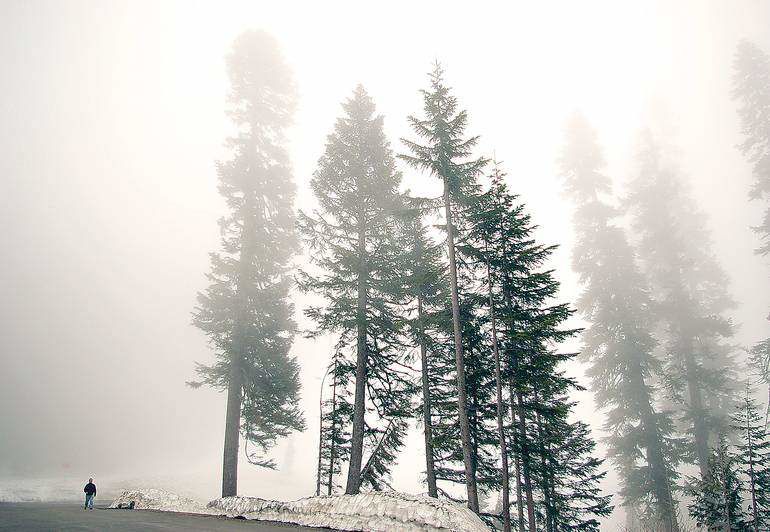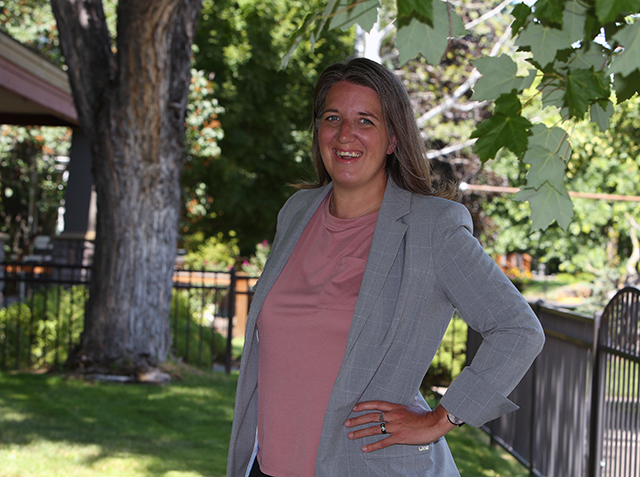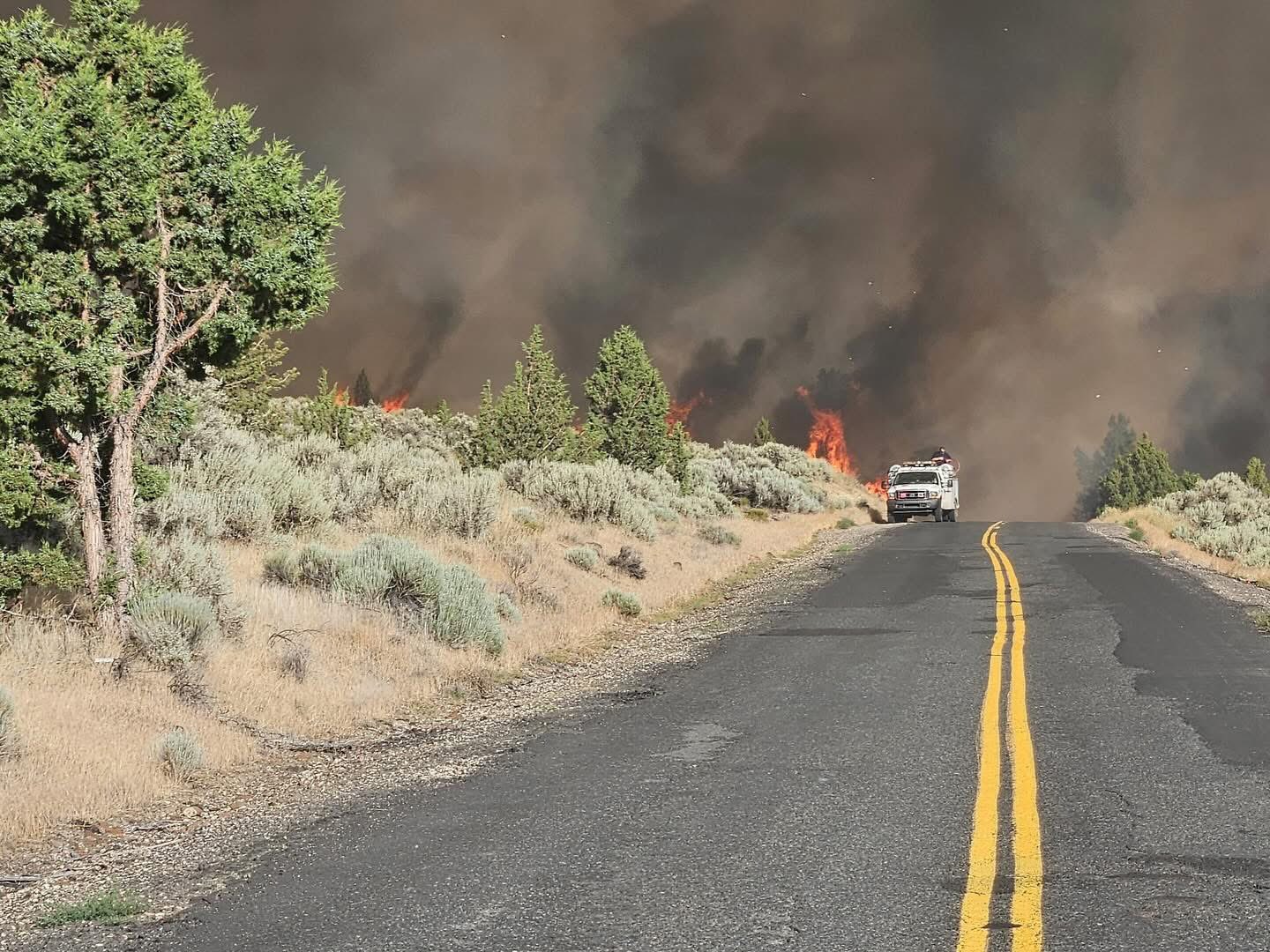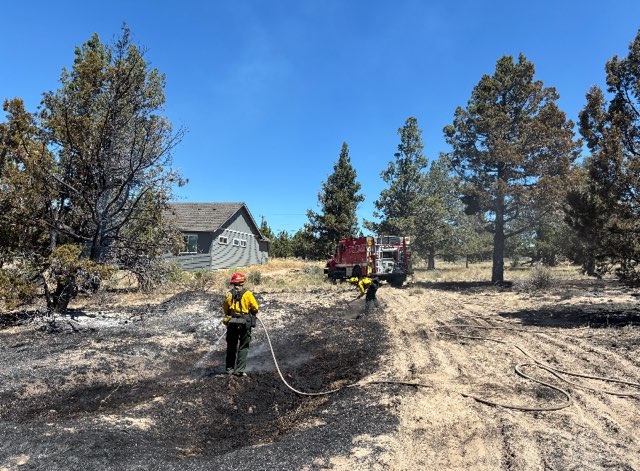Welcome to paradise
Published 5:00 am Sunday, June 15, 2008

- A forest of alpine fir rises through the mist and spray at Narada Falls, a 241-foot waterfall that is a 1.2-mile hike (or a three-mile drive) downhill from Paradise. In winter, the falls freeze and become 150 feet of icicles, attracting ice climbers from near and far.
PARADISE, Wash. —
“So this is Paradise,” I chuckled to myself as I drove a winding road through snow and clouds up the south flank of Mount Rainier. “I always wondered what it would look like.”
Trending
In fact, my traveling companion and I felt as though we had been locked outside the gates of Shangri-La, forbidden from entering the inner sanctum. A dense mist enveloped the small community at the 5,400-foot level of the Cascades’ highest mountain. The newly reopened Paradise Inn was shrouded in a cold, damp haze.
The following morning, however, the vapors parted and we were greeted by glorious sunshine. Alpine firs reached heavenward before a pastel canvas of craggy peaks. Gray foxes scampered across the road. Blue grouses strutted through mating rituals. Groups of climbers assembled beneath the snow-packed crest of Mount Rainier, launching three- or four-day expeditions to conquer the summit.
And in the shadow of the 14,410-foot mountain at the heart of Mount Rainier National Park, even though spring snows still covered meadows that by July would be spread with wildflowers, we did indeed feel as though we were in paradise.
Realm of the Whittakers
This spectacular national park in Washington state has six road entrances from the north, south, east and west, but most are open only from mid-June until the first autumn snowfall.
The main exception is the Nisqually Entrance, at the park’s southwest corner 54 miles southeast of Tacoma. Just six miles from the park-headquarters hamlet of Ashford and an 18-mile drive to Paradise, this was where we made our approach to the mountain late last month via Washington state Highway 706.
Trending
Paradise averages 680 inches (over 50 feet) of snowfall each winter, so it came as no surprise when we learned that its late-season snowpack would be cloaking its famous fields of flowers until July. So before entering the park, we stopped in Ashford to rent snowshoes. Whittaker Mountaineering’s Summit Haus fitted us with equipment at a rate of $14 per day.
The Whittaker name is synonymous with Mount Rainier. Jim Whittaker was the first American to conquer Mount Everest, the world’s highest mountain in the Himalaya range, in 1963. Lou Whittaker, his twin brother, is an international mountaineering guide with more than 250 ascents of Mount Rainier to his credit. Today, Lou’s son and daughter-in-law, Peter and Erika Whittaker, are in charge of the family business on a day-to-day basis, and that’s no step down: Peter has made more than 200 ascents of Mount Rainier and has led mountaineering expeditions on six continents. Erika is a former world-class ski racer from Austria.
Adjacent to the Summit Haus is Whittaker’s Bunkhouse, a loggers’ crash pad built in 1912. It was purchased by Lou Whittaker in 1990 and renovated to become an 18-room climbers’ retreat.
Longmire’s springs
Through the park gateway six miles east of Ashford, Washington state Highway 706 follows the Nisqually River past a handful of picnic grounds and trailheads. Seven miles from the Nisqually entrance, it reaches the park community of Longmire, home to the National Park Inn (open year-round) and the Longmire Museum.
The museum tells the story of James Longmire, a Washington pioneer who settled near Olympia in 1853. He assisted with the first known ascent of Mount Rainier in 1870, and climbed it himself in 1883, the same year he discovered modest mineral springs on its southwest flank. Longmire and his sons cleared a trail to the springs (now Washington state Highway 706), built a log cabin with five cots, and began promoting “Longmire’s Medical Springs.”
After Longmire’s death in 1897, his family continued to expand the facilities, which by now had become a full-fledged tourist attraction with a hotel and cabins, bathhouses, stables, a photo studio, barber shop, pool hall and more.
The Longmire property became the headquarters of Mount Rainier National Park upon its establishment in 1899. The hotel complex stood until 1939, when it was razed. By that time, the 25-room National Park Inn — still Rainier’s only year-round lodging property — and other facilities had replaced it. Today, the ¾-mile Trail of the Shadows explores historic Longmire, including the trickling springs and the site of the original pioneer homestead.
The Nisqually road
The best things about the winding, nine-mile road that climbs from Longmire, at 2,700 feet elevation, to Paradise, at 5,400 feet, are the views, especially the waterfalls.
For us, the most impressive sight was Christine Falls, a 75-foot drop that twists through a narrow chasm on Van Trump Creek. From below, framed by a cobbled stone bridge, it is particularly beguiling. The waterfall was named for Christine Van Trump, whose father, Philemon Van Trump, had made the first recorded climb of Rainier. In 1889, at the age of 9, she hiked to the 10,000-foot level of the mountain despite suffering from a crippling nervous disorder.
About a mile on, the Glacier Bridge viewpoint affords a panorama of the headwaters of the Nisqually River, which flows 81 miles to Puget Sound. The stream is fed by the large — and growing — Nisqually Glacier, said to be advancing at a rate of more than two feet a day. During particularly heavy rains and severe floods in early November 2006, the Nisqually River turned into a monstrous torrent that washed away campgrounds, bridges and a full quarter-mile of the park road. It has taken more than a year to restore many park facilities; others may never be replaced.
Shortly after Glacier Bridge, on our drive to Paradise, we pierced the lowest level of clouds and found ourselves in an area of extremely limited visibility. We were able to peer over the rim of 241-foot Narada Falls, but a trail to its foot was heavily snowed in. Rays of sun that filtered through the fog framed alpine firs and lent an eerie glow to the scene.
Paradise Camp redux
There has been a community at Paradise since 1916, when the original Paradise Inn was built. It’s at the heart of a national historic landmark district once known as Paradise Camp. In the years between World War I and the Great Depression, budget-oriented visitors stayed in soft-sided tent cabins beside a lodge used primarily for food service, a short walk from the inn. The scene was one that blended with the natural subalpine landscape, even after the addition of a nine-hole golf course in 1931.
Depression and war took their toll on the economy. An alpine ski experiment at Paradise failed to take hold, and today, although the road to Paradise is kept clear year-round (as weather permits), it’s only between May and October that facilities are anything more than extremely limited.
Still, the National Park Service hasn’t forgotten old Paradise Camp. In fact, a new Paradise Visitor Center is currently rising on its footprint. (In preparing the visitor-center site for construction, archaeologists uncovered the foundation and basement of the original Paradise Lodge, as well as such items as pieces of glass and porcelain, ski-pole baskets and even a half-drunk bottle of whisky.)
The new building is scheduled for completion in the fall of 2009, at which time the current Henry M. Jackson Memorial Visitor Center — no longer considered handicapped accessible or fire-and-earthquake safe — will be taken down. The park service’s intention is to return the man-made landscape here to its appearance of eight decades earlier, minus ski lifts and golf course.
Paradise is base camp for most climbs to Rainier’s summit. Every year, about 9,000 adventurers set out for the 14,410-foot high point; nearly half of them succeed, most on group climbs with experienced guides. Rustic Camp Muir, at 10,188 feet, is the first-day goal of most climbers; travel beyond here requires a special climbing permit.
Inn-ovative restoration
Life at Paradise revolves around the Paradise Inn, which reopened last month after a renovation that took two full years to complete. Today, it is a delightful blend of old and new. In its broad lobby and dining room, three stone fireplaces rise nearly 60 feet. A beautiful grandfather clock and hand-crafted piano draw particular attention.
“Thirty-five carpenters and more than 100 men worked all through the winter for two years,” general contractor Ken Hardy, of Miller/Watts-John Korsmo Construction of Tacoma, said. “They couldn’t get in during the floods of November ’06, or for a brief time this past winter, when 14 avalanches closed the road for 10 days, but otherwise, they were here all the time.”
Work began when the 1916 inn closed in September 2005, at the end of that summer season. It didn’t reopen until a month ago: May 15, 2008.
“We quake-proofed the foundation with concrete and built sheer walls 14 feet deep into the bedrock,” Hardy said. We lifted one-third to one-half of the structure and repaired the footings. We gave it a whole new roof structure, replacing about 200 logs. We put all new hardwood flooring in the great room and the dining room. We straightened the east wing, which was leaning seven to 10 inches to the south; gave it new plumbing and wiring, and rebuilt the stairwells.
“We took all three fireplaces completely down and marked each and every stone, about 500 in all. For seismic reasons, we poured a concrete core for each firebox and chimney, then replaced every rock exactly as it had been on all three chimneys.”
Our room in the east wing of the Paradise Inn was still rustic in nature, with a tiny bathroom and steam-radiator heating. A second phase of renovation is planned, as funds become available, to upgrade these accommodations.
But we thoroughly enjoyed our two-night stay, taking our meals in the luxurious dining room and enjoying short snowshoe excursions. We were fortunate to see such wildlife as deer and blue (sooty) grouse, a male’s tail feathers splayed and throat sac inflated as he strutted in a spring courtship ritual.
We got to know a couple of wild gray foxes by name: “Foxy” often sat outside the rear door of the inn’s kitchen, hoping for a few morsels to be slung her direction, while “Little Thief” often scampered across the parking lot, checking out the contents of open car trunks and once proudly displaying a pack rat in his jaws.
In the evenings, we sat by a fireplace, playing board games and listening to the music of the inn’s resident piano player. Our stay couldn’t have been more relaxing.
Visiting Paradise, Wash.
• Gas, 632 miles (round-trip) @ $4.20/gallon $106.18
• Entry, Mount Rainier National Park $25
• Lodging (2 nights), Paradise Inn $338.23*
• Meals (including tax and tips) $210
• Snowshoe rental (two days) $56
TOTAL $735.41
*includes tax
If you go
INFORMATION
• Mount Rainier National Park. Washington State Highway 706, Ashford, Wash. 360-569-2211, 569-2400, www.nps.gov/mora
• Mount Rainier Visitor Association. P.O. Box 214, Ashford, Wash.; 877-617-9951, www.mt-rainier.com
• National Park Inn. Washington State Highway 706, Longmire, Wash. 360-569-2275, www .guestservices.com/rainier. Rates from $107 (without bath), $143 (with bath).
• Paradise Inn. Washington State Highway 706, Paradise, Wash. 360-569-2275, www .guestservices.com/rainier. Rates from $99 (without bath), $149 (with bath).
• Whittaker’s Bunkhouse. 30205 Washington State Highway 706, Ashford, Wash.; 360-569-2439, www .whittakersbunkhouse.com. Rates from $30 (dormitory), $65 (winter), $85 (summer).
Next Week: Jacksonville








